Junior Engineer
1000+ Junior Engineer Interview Questions and Answers

Asked in Foxconn

Q. Are you familiar with L4 level rework?
L4 level rework is a term used in engineering to describe a specific type of rework process.
L4 level rework refers to the highest level of rework in a hierarchical system.
It involves complex and advanced modifications or repairs to a product or system.
L4 level rework requires a deep understanding of the engineering principles and expertise in the specific domain.
Examples of L4 level rework can include redesigning a circuit board layout, modifying software code at a low-level,...read more

Asked in Hindalco Industries

Q. What causes the overheating of the commutator in a DC motor?
Over-heating of Commutator in a DC motor can be caused by factors like excessive current, poor ventilation, dirty environment, and worn-out brushes.
Excessive current flowing through the motor can cause the commutator to overheat.
Poor ventilation around the motor can lead to inadequate cooling, resulting in overheating.
A dirty environment can cause dust and debris to accumulate on the commutator, hindering heat dissipation.
Worn-out brushes can create excessive friction and res...read more

Asked in Tata Steel

Q. Different types off load applied on long and short steel column
Different types of loads applied on long and short steel columns
Long columns are more susceptible to buckling under compressive loads
Short columns are more susceptible to crushing under compressive loads
Long columns are more likely to experience bending under lateral loads
Short columns are more likely to experience shear under lateral loads
Examples of loads include dead load, live load, wind load, seismic load, etc.

Asked in Wind World

Q. 1. What is Transformers ? 2.five mejor difference between AC and DC ? 3.what is motor ? 4.electromagnetic induction law? 5.ohms law?
Questions related to electrical engineering concepts such as transformers, AC and DC, motor, electromagnetic induction law, and Ohm's law.
Transformers are devices that transfer electrical energy from one circuit to another through electromagnetic induction.
AC (alternating current) changes direction periodically while DC (direct current) flows in one direction only.
A motor is a device that converts electrical energy into mechanical energy.
Electromagnetic induction law states t...read more

Asked in Jindal Steel and Power

Q. Can you handle manpower of up to 100 or more?
Yes, I have experience managing large teams and can handle manpower up to 100 or more.
I have successfully managed a team of 150 employees in my previous role
I am skilled in delegating tasks, setting goals, and ensuring productivity
I have experience in conducting performance reviews and providing feedback to team members

Asked in Liberty Oil Mills

Q. What can you explain about filling machines, their components, and the details regarding the sensors used?
Filling machines are used to fill containers with liquid or powder products. They consist of components like filling nozzles, pumps, and sensors.
Filling machines are used in industries like food and beverage, pharmaceuticals, and cosmetics.
Components of filling machines include filling nozzles, pumps, valves, and containers.
Sensors used in filling machines include level sensors, flow sensors, and pressure sensors.
Level sensors are used to detect the level of liquid in the con...read more
Junior Engineer Jobs


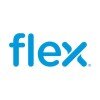

Asked in Victora Auto Private Limited

Q. What is the process for tool maintenance and documentation in your field?
The process for tool maintenance and documentation involves regular inspections, scheduled maintenance, and detailed record-keeping.
Perform regular inspections of tools to identify any issues or signs of wear and tear.
Schedule routine maintenance tasks such as cleaning, lubrication, and calibration.
Keep detailed records of all maintenance activities, including dates, tasks performed, and any repairs or replacements.
Document any issues or malfunctions encountered during tool u...read more

Asked in Belrise Industries

Q. If we want to stop a motor automatically every 10 minutes, what parameters should we use?
To stop a motor every 10 minutes, use timers, sensors, and control systems for automation.
Use a programmable timer to set the motor operation interval.
Implement a relay or contactor to control the motor's power supply.
Incorporate a microcontroller (e.g., Arduino) for precise timing.
Consider using a PLC (Programmable Logic Controller) for industrial applications.
Add safety features like overload protection to prevent motor damage.
Share interview questions and help millions of jobseekers 🌟


Asked in Khilari Infrastructure

Q. What is characteristics compressive strength of concrete? How do you design concrete mix of grade M30? Where do you provide over lap in column and why? What is TBM?
Answers to questions related to concrete engineering
Characteristic compressive strength of concrete is the strength of concrete at 28 days of curing
To design concrete mix of grade M30, use a mix proportion of 1:1.5:3 of cement, sand, and aggregate respectively
Overlap in column reinforcement is provided at least 50 times the diameter of the bar to ensure continuity of reinforcement
TBM stands for Tunnel Boring Machine, used for excavating tunnels in rock or soil
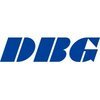
Asked in DBG Technology

Q. What is the difference between a feature phone and a smartphone?
A smartphone is a type of feature phone with advanced features like internet connectivity, touch screen, and apps.
Feature phones are basic mobile phones with limited functionality
Smartphones have advanced features like internet connectivity, touch screen, and apps
Smartphones are more expensive than feature phones
Examples of feature phones include Nokia 3310 and Nokia 105
Examples of smartphones include iPhone, Samsung Galaxy, and Google Pixel

Asked in Metso

Q. What is the hydraulic cylinder model used in the press filter?
The model of hydraulic cylinder in press filter depends on the specific press filter being used.
The model of hydraulic cylinder can vary depending on the size and capacity of the press filter.
Some common models of hydraulic cylinders used in press filters include tie rod cylinders and welded cylinders.
The specific model of hydraulic cylinder used in a press filter can be determined by consulting the manufacturer's specifications or consulting with a hydraulic systems expert.

Asked in Tripura Constructions

Q. 1.tell me about your self? 2.what is the size of cover blocks available? 3.what is buckling of column?
Interview questions for Junior Engineer: self-introduction, size of cover blocks, and buckling of column.
For self-introduction, talk about your education, work experience, and skills.
Cover blocks are available in various sizes, such as 20mm, 25mm, 30mm, and 40mm.
Buckling of column is a phenomenon where a column fails due to excessive compression load, causing it to bend or buckle.
Factors affecting buckling include column length, cross-sectional area, and material properties.
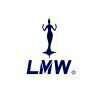
Asked in Lakshmi Machine Works

Q. What is FMEA,what are the 5s,cp vs cps different
FMEA is a risk assessment tool used to identify and mitigate potential failures. 5S is a workplace organization method. CP and CPS are statistical process control measures.
FMEA stands for Failure Mode and Effects Analysis. It is a systematic approach to identifying and mitigating potential failures in a process or product.
5S is a workplace organization method that involves sorting, simplifying, sweeping, standardizing, and sustaining. It is used to improve efficiency and redu...read more

Asked in BKT Tyres

Q. What is the Final finishing of tyre?
The final finishing of a tyre involves several processes to enhance its appearance and performance.
The final finishing of a tyre includes processes like buffing, painting, and branding.
Buffing is done to remove any imperfections on the surface of the tyre.
Painting is done to give the tyre its final color and appearance.
Branding involves adding the manufacturer's logo, name, and other relevant information on the tyre.
The final finishing also includes quality checks to ensure t...read more

Asked in MKC Infrastructure Ltd.

Q. How would you design a box culvert step by step?
Designing a box culvert involves several steps including site investigation, hydraulic analysis, structural design, and construction planning.
Conduct a site investigation to determine the soil conditions and water table level
Perform hydraulic analysis to determine the flow rate and water level
Select appropriate materials and dimensions for the culvert based on hydraulic and structural requirements
Design the structural components of the culvert including footings, walls, and r...read more

Asked in Voltech

Q. Testing of energy meters, CTs and PTs etc.
Testing of energy meters, CTs and PTs involves verifying their accuracy and functionality.
Energy meters are tested to ensure they measure energy consumption accurately.
CTs (Current Transformers) are tested to verify their current ratio and accuracy.
PTs (Potential Transformers) are tested to verify their voltage ratio and accuracy.
Testing may involve simulating different load conditions and measuring the output.
Calibration of energy meters, CTs, and PTs is essential for accura...read more

Asked in SRF

Q. What is LEL ,UEL , 5S hazardous chemical handling, vaccum system, failure trouble shooting ,steam distillation etc
LEL stands for Lower Explosive Limit, UEL stands for Upper Explosive Limit. 5S is a method for organizing and maintaining a clean and safe workplace. Vacuum system is a system that uses suction to remove substances. Failure troubleshooting is the process of identifying and resolving issues. Steam distillation is a technique used to separate components of a mixture based on their boiling points.
LEL is the lowest concentration of a flammable substance in air that can ignite
UEL ...read more
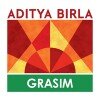
Asked in Grasim Industries

Q. What is the use of HCl in your organization?
HCl is used in our organization for various purposes including laboratory testing, cleaning, and pH adjustment.
HCl is commonly used in laboratory testing to analyze and identify different substances.
It is used for cleaning and removing mineral deposits from equipment and surfaces.
HCl is also used for pH adjustment in various processes and reactions.
In some cases, it is used as a reagent in chemical reactions to facilitate specific transformations.
For example, HCl can be used ...read more
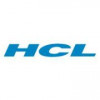
Asked in HCL Group

Q. What is transformer and transformer effect
A transformer is an electrical device that transfers electrical energy from one circuit to another through electromagnetic induction.
Transformers are used to increase or decrease the voltage of an alternating current (AC) power supply.
They consist of two coils of wire, called the primary and secondary coils, wrapped around a magnetic core.
When an AC voltage is applied to the primary coil, it creates a magnetic field that induces a voltage in the secondary coil.
The transformer...read more

Asked in Jindal Stainless

Q. Types of steel, and Regarding all steel process.
Types of steel and the steel process
Types of steel include carbon steel, stainless steel, and alloy steel
Steel process involves steps like melting, refining, casting, rolling, and heat treatment
Examples of steel processes are Bessemer process, open hearth process, and electric arc furnace process

Asked in Nagarjuna Construction Company

Q. What is the size of plywood board used in centering?
The size of plywood board used in centring varies depending on the specific project requirements.
The size of plywood board used in centring can range from 4 feet by 8 feet to 4 feet by 10 feet.
Thicker plywood boards are typically used for heavier loads or taller structures.
Plywood boards are commonly used in construction for formwork and temporary support structures.
The size of plywood board used in centring is determined by the size and weight of the concrete structure being...read more
Asked in Lumens Aircon

Q. Different between rohs and non rohs What is the Soldering acceptance criteria for class321 pcb board
RoHS stands for Restriction of Hazardous Substances and refers to a directive that restricts the use of certain hazardous materials in electrical and electronic equipment.
RoHS-compliant products do not contain substances like lead, mercury, cadmium, and certain flame retardants.
Non-RoHS products may still contain these hazardous substances.
Soldering acceptance criteria for class321 PCB board may vary depending on the specific standards and requirements set by the industry or ...read more

Asked in Maruti Suzuki

Q. What is for a clutch working
A clutch works by engaging and disengaging the engine from the transmission to allow for gear changes.
The clutch pedal is pressed to disengage the clutch
Friction between the clutch plate and flywheel engages the clutch
The clutch allows for smooth gear changes without stalling the engine
Clutches can wear out over time and need to be replaced

Asked in Sterling

Q. When does the diesel engine start in the fire pump room?
The diesel engine in the fire pump room starts automatically when there is a loss of power.
The diesel engine starts when there is a power outage to ensure continuous operation of the fire pump.
It is designed to kick in automatically to maintain water pressure in case of emergencies.
Regular maintenance and testing of the diesel engine is crucial to ensure it functions properly during emergencies.

Asked in Liberty Oil Mills

Q. What are the different types of electrical motor starters, and can you explain each in detail?
Different types of electrical motor starters include DOL starters, star-delta starters, and soft starters.
Direct On Line (DOL) starters provide full voltage to the motor at start-up.
Star-delta starters initially connect the motor in star configuration to reduce starting current.
Soft starters gradually increase voltage to the motor to reduce starting current and mechanical stress.
Other types include auto-transformer starters, electronic starters, and magnetic starters.
Asked in SAR Coating

Q. What equipment should be used for testing in the paint shop?
Testing equipment in a paint shop ensures quality and adherence to standards for coatings and finishes.
Viscosity Cup: Measures the viscosity of paint to ensure proper application.
Gloss Meter: Assesses the gloss level of the paint finish for aesthetic quality.
Dry Film Thickness Gauge: Measures the thickness of the paint layer to ensure it meets specifications.
Adhesion Tester: Evaluates the adhesion of the paint to the substrate to prevent peeling.
Color Spectrophotometer: Ensur...read more

Asked in Liberty Oil Mills

Q. What is the power factor, and how does it affect electricity bills?
Power factor is the ratio of real power to apparent power in an electrical system, affecting electricity bills by increasing energy consumption and reducing efficiency.
Power factor is a measure of how effectively electrical power is being used in a system.
A low power factor results in higher energy consumption and increased electricity bills.
Improving power factor through power factor correction can reduce electricity bills and improve efficiency.
Power factor is calculated as...read more
Asked in SAR Coating

Q. What testing instruments are needed in a paint shop?
Testing in a paint shop ensures quality and durability of coatings using various instruments and methods.
Viscosity Meter: Measures the thickness of paint to ensure proper application.
Gloss Meter: Assesses the sheen level of the paint finish.
Color Spectrophotometer: Ensures color accuracy and consistency.
Adhesion Tester: Evaluates how well the paint adheres to the substrate.
Dry Film Thickness Gauge: Measures the thickness of the dried paint layer.

Asked in King Fahad Specialist Hospital

Q. What is dry bulb temperature?
Dry bulb temperature is the temperature of the air measured by a thermometer.
It is the most commonly used temperature measurement in HVAC systems.
It is also known as air temperature.
It does not take into account the moisture content of the air.
It is measured using a thermometer placed in a shaded area.
It is used to calculate the relative humidity of the air.

Asked in India Japan Lighting

Q. How do you approach problem-solving in a group discussion?
To solve any problem for group discussion, one should listen actively, analyze the problem, suggest solutions, and encourage participation.
Listen actively to understand the problem and perspectives of others.
Analyze the problem by breaking it down into smaller parts and identifying the root cause.
Suggest solutions based on the analysis and encourage others to do the same.
Encourage participation by involving everyone in the discussion and valuing their input.
Collaborate with t...read more
Interview Questions of Similar Designations
Interview Experiences of Popular Companies





Top Interview Questions for Junior Engineer Related Skills



Reviews
Interviews
Salaries
Users

















